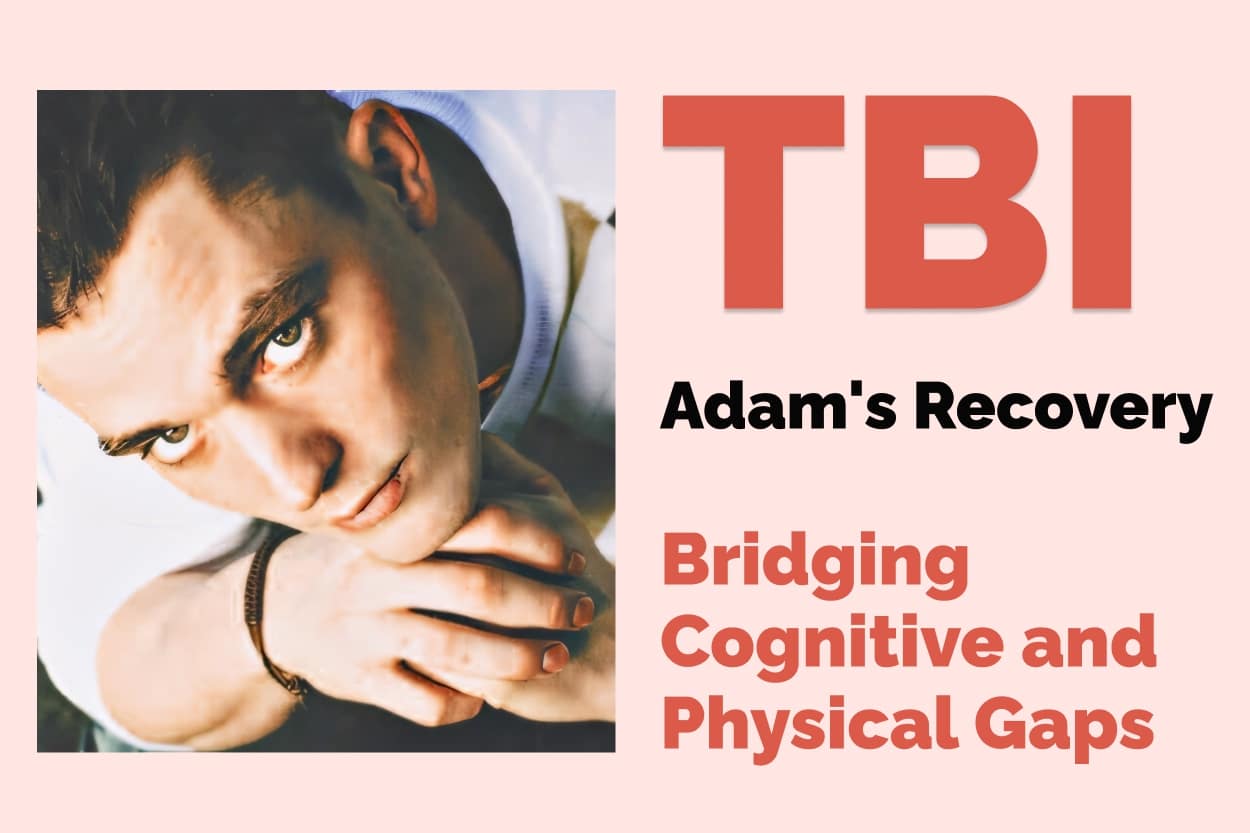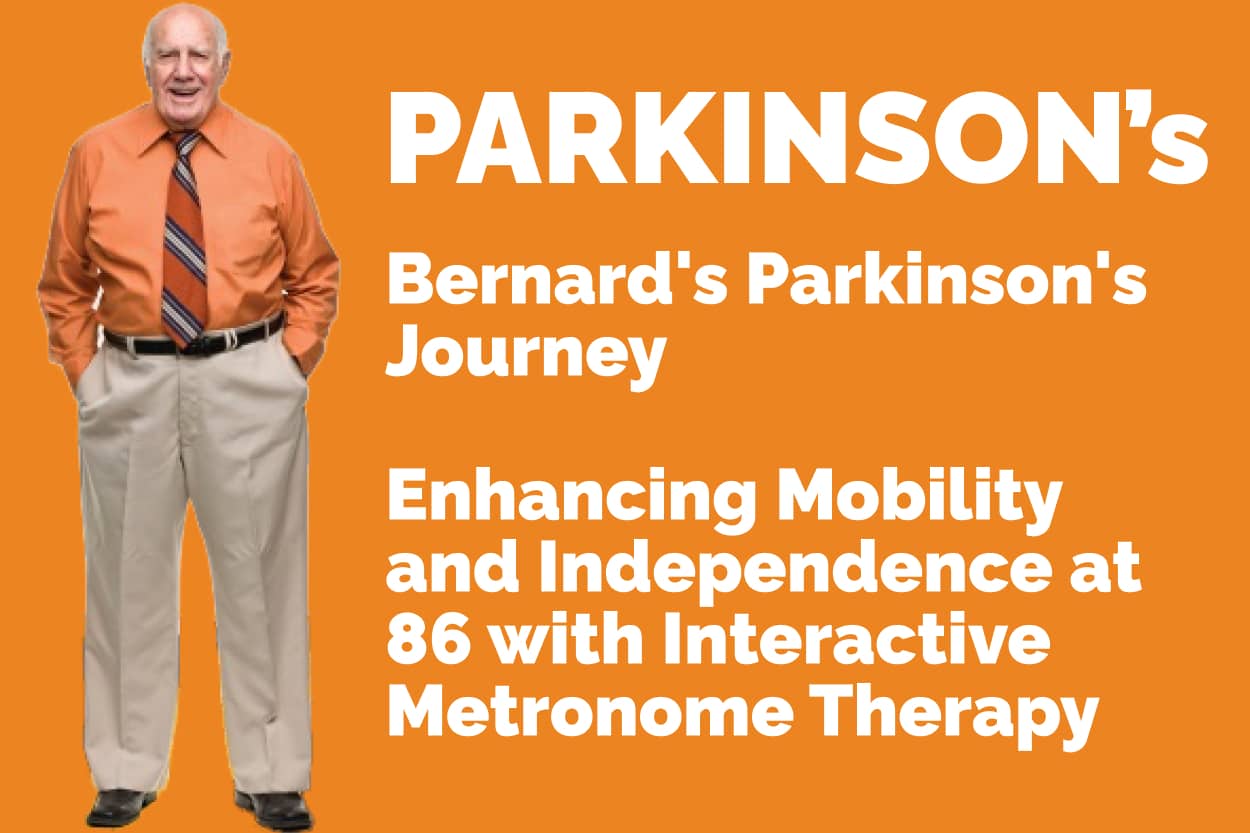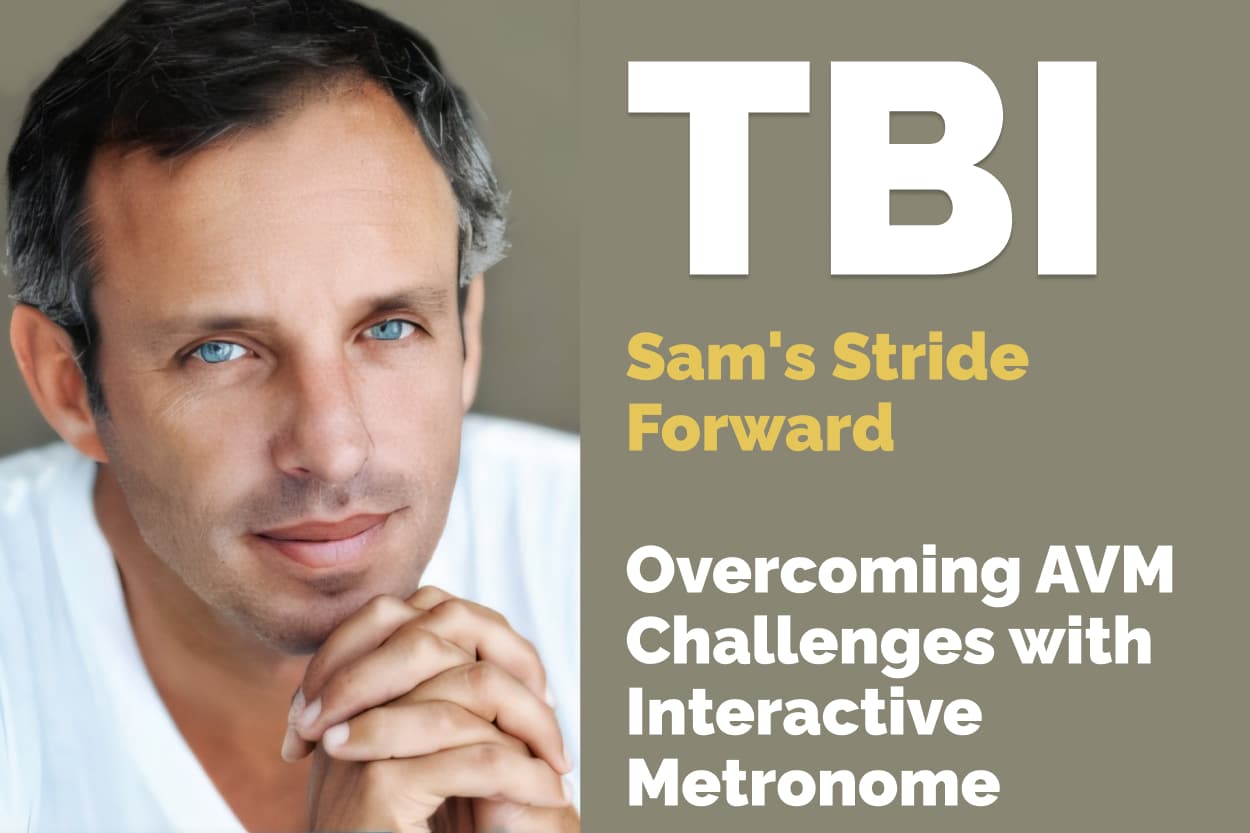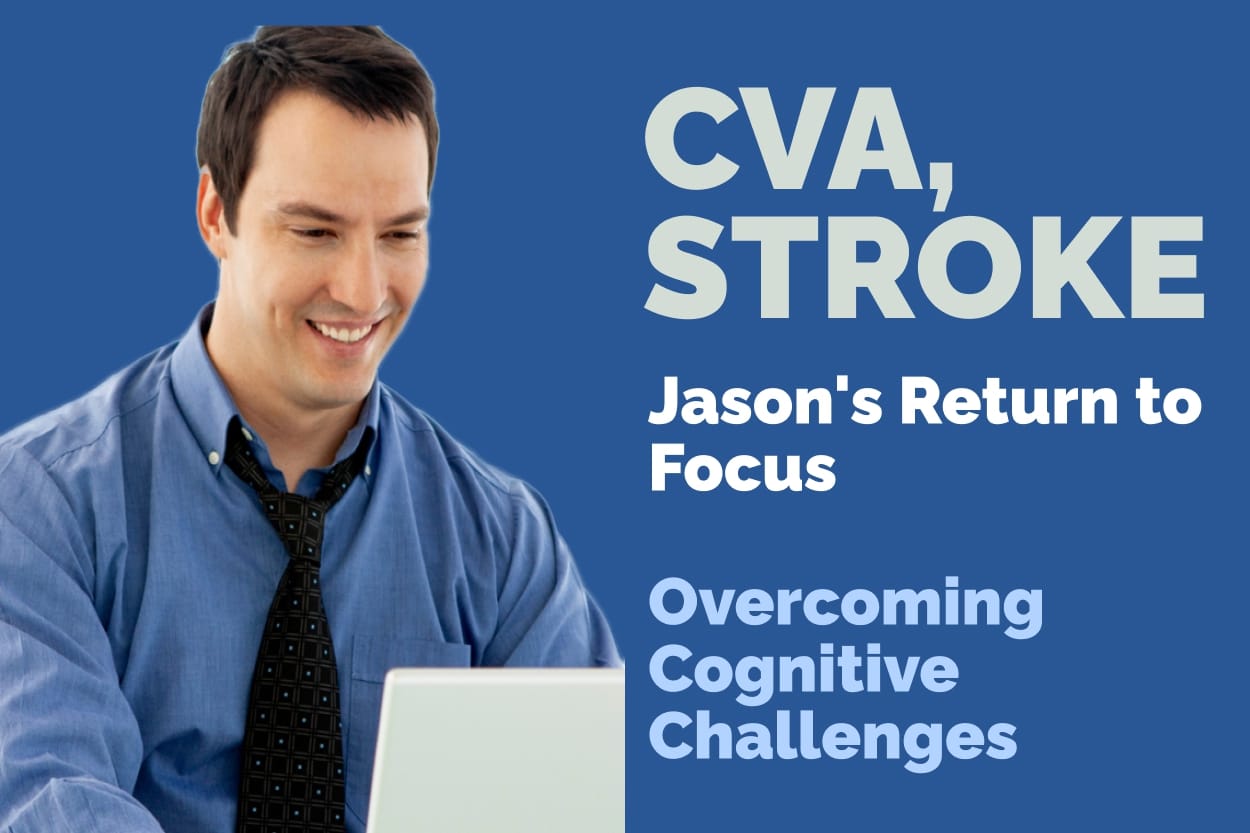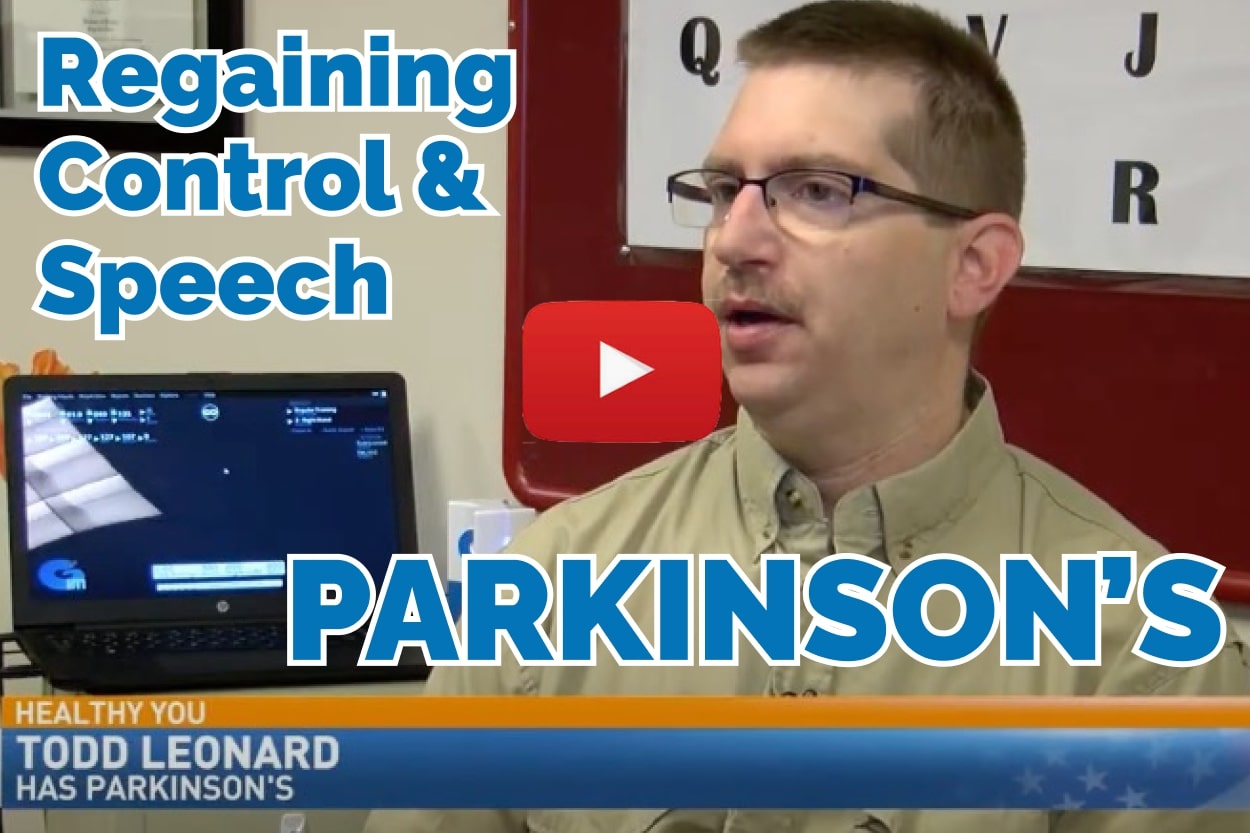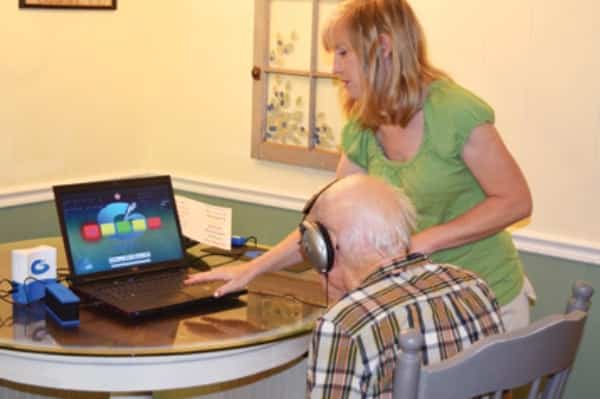Interactive Metronome Testimonials
Filter Your Results
Adam, a 28-year-old experiencing cognitive and physical deficits from an anoxic event, saw remarkable improvements in auditory processing, attention, and organization through Interactive Metronome (IM) therapy. Initially struggling with coordination and impulsivity, Adam achieved a 75% improvement in timing and rhythm, which translated to better concentration, reduced impulsivity, and enhanced motor skills. His journey underscores the transformative potential of IM in rehabilitating both brain and body after injury.
At 86, Bernard faced challenges from Parkinson’s Disease and recovery from surgery but found significant improvements in mobility and daily function through Interactive Metronome (IM) therapy. Incorporating IM into his rehabilitation, Bernard regained independence for basic tasks and continued active involvement in his business. His commitment to IM therapy, even engaging his assistant Ernie in sessions, showcases the impact of rhythm and timing exercises on improving life quality, even in advanced age.
Sam, a 39-year-old man with arteriovenous malformation (AVM) complications, including left side hemiparesis and severe cognitive deficits, found hope and progress through Interactive Metronome (IM) therapy. Despite initial extreme deficiencies, Sam’s dedication to IM training led to significant improvements in balance, coordination, attention, and cognitive functions. His journey demonstrates the effectiveness of tailored IM therapy in addressing both physical and cognitive rehabilitation needs, culminating in notable improvements in his motor and cognitive skills.
After a cerebral incident left Jason, a 33-year-old finance professional, with severe memory and attention deficits, he embarked on a journey of rehabilitation including cognitive therapy with Interactive Metronome (IM). This tailored therapy improved his vigilance, memory, and ability to manage complex tasks simultaneously. Jason’s return to his demanding job in finance, now with enhanced focus and cognitive function, underscores the effectiveness of IM in restoring essential cognitive skills needed for professional success.
Todd Leonard, diagnosed with Parkinson’s at 42, found improved motor skills and communication through Interactive Metronome therapy at Health Source. The therapy, involving a metronome to aid in synchronizing motor planning, has enabled Todd to regain control over his movements and speech, showing significant progress. Health Source plans to further integrate metronome use in various therapeutic areas, aiming to enhance patients’ daily lives.
Randolph is a successful, 50-year-old professional diagnosed with ADHD. He felt he could handle any single task efficiently but he would lose focus when he tried to do two tasks simultaneously. For instance, his inability to drive his car and carry on a conversation at the same time. Randolph was hopeful that Interactive Metronome® might help him.
Frederick Davis, a 49-year-old who lost both legs to infection, showcases the benefits of Interactive Metronome (IM) therapy in regaining mobility. This unique timing and synchronization therapy has been pivotal in helping him relearn to walk, enabling his return to normal activities and fueling his desire to inspire others facing similar challenges.
Samuel, an 18 year-old boy, was seen for a speech and language evaluation based on physician referral for speech-language deficits secondary to Autism and ADHD. During the evaluation, his parents expressed concerns about Samuel’s overall speech and language skills. They reported that he has difficulty with the following: reading comprehension, auditory processing, attention and focusing, following complex directions and conversational skills such as initiating, maintaining and terminating a conversation.
Seven months later, Virginia was faced with the amputation of her left leg because of osteomyelitis. This time, her pre-prosthetic training incorporated Interactive Metronome® exercises.
Her MRI showed mild cortical involution and periventricular white matter. She began IM treatment, and initially she was very receptive to treatment, although, she did have trouble maintaining cognitive as well as physical stamina. Balancing exercises were also an issue for her.
Natalie has suffered a 20 year battle with depression. Not only does it run in her family but she also went through severe postpartum after the birth of her daughter. Before IM, she experienced agitation and anxiety along with depression, which affected her daily life. After IM, she is better with decision making on a daily basis and looking forward to the future.
Simon, 24 years old, had a traumatic brain injury a year ago due to gun shot wounds. He is blind in his left eye and only has a quadrant of vision in his right. This caused Simon to have trouble with concentrating as well as safety judgment. He began IM after five months of a brain program. IM helped him with is attention and concentration along with helping him feel more calm in social situations.
Tom, a retired veterinarian diagnosed with Parkinson’s, was struggling with consistent movement. After IM training, not only was be able to improve his weight shifting but he also able to ease his reliance on his walker.
Claudia is an older woman has been diagnosed with demenita. Claudia’s family wasn’t really sure how to help her, so they reached out to Interactive Metronome ®With IM training, Claudia was able to improve and increase her attention.
This news clip, from WMAR Baltimore, features our very own Kate Ortman from Brain Training Center of Maryland and her son, Greg, who uses IM to help with his concussion recovery. With the new Will Smith movie “Concussion” coming out (released on December 25th), we hope that it sheds light on a very important and dangerous topic – untreated sports related brain injury.
After a stroke six years ago, Janet Carter developed relentless migraines. She couldn’t read or concentrate, noise was excruciating, and her work in the children’s ministry at the Journey Assembly of God church in Bradenton became more difficult. Most people probably couldn’t tell any of that. She kept things to herself. Carter discovered Interactive Metronome, a therapy designed to retrain the brain in how it engages with timing. In everyday activities, microseconds and milliseconds matter, although people without brain injuries aren’t aware that their bodies and minds naturally synchronize. Carter’s granddaughter had found success with Interactive Metronome therapy, which is why Carter decided to try it.
George is a 78-year-old man, receiving Physical Therapy and Occupational Therapy to address functional movement problems as a result of his moderate to severe Parkinson’s disease. As an OT new to the IM program I was interested to see whether the program would help to alleviate the tremor in both of his hands as he tried in vain to manage his fasteners, buttons and zippers when dressing. I knew from experience that helping clients in this area with traditional therapy techniques (repetition/adaptation/compensation) was often arduous, frustrating and time-consuming.
A new therapy, called Interactive Metronome, uses a steady beat to help improve cognitive and motor skills, and help amputees such as Frederick Davis of St. Petersburg to walk again.
Within one month of Robin’s birth we knew something was not right. In 1971, my husband and I rejected institutional placement for our infant daughter who was recently diagnosed as severely disabled and later with classic (severe) autism. The doctor said to us, “…as long as she’s progressing, be thankful… any progress she might make in childhood will regress as an adult.” Determined, we made a commitment, as long as she’s progressing, regardless how slow, we’d keep pushing her forward. Thus, as parents we developed new hopes and dreams for our daughter – that eventually lead her to independency.
Featured in the News: After serious head injury, Dover principal spreads awareness about concussions
Principal Julie Sterner’s injury impaired her ability to read and multitask after falling in a bounce house. She said therapy that included Interactive Metronome helped her become herself again.

